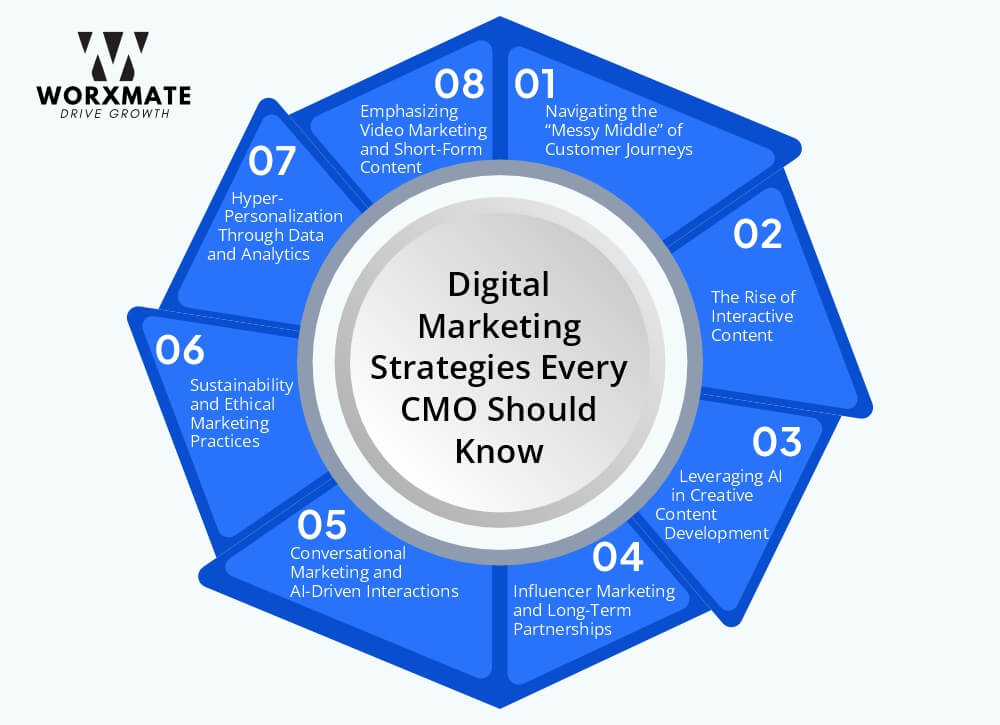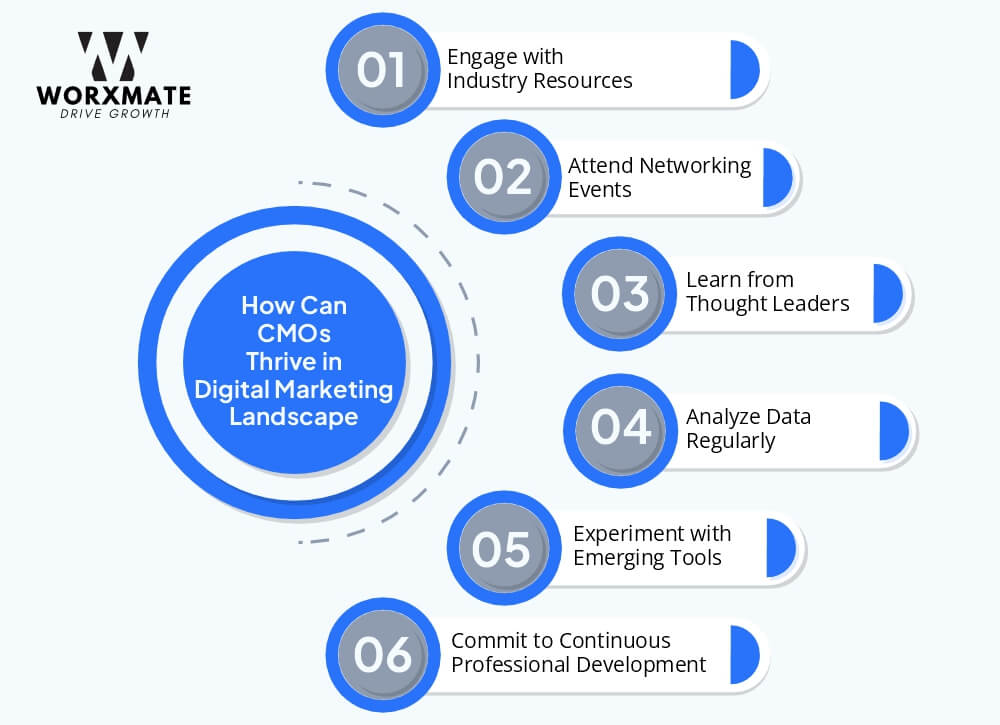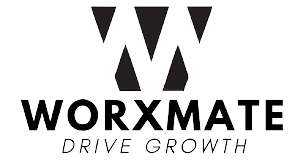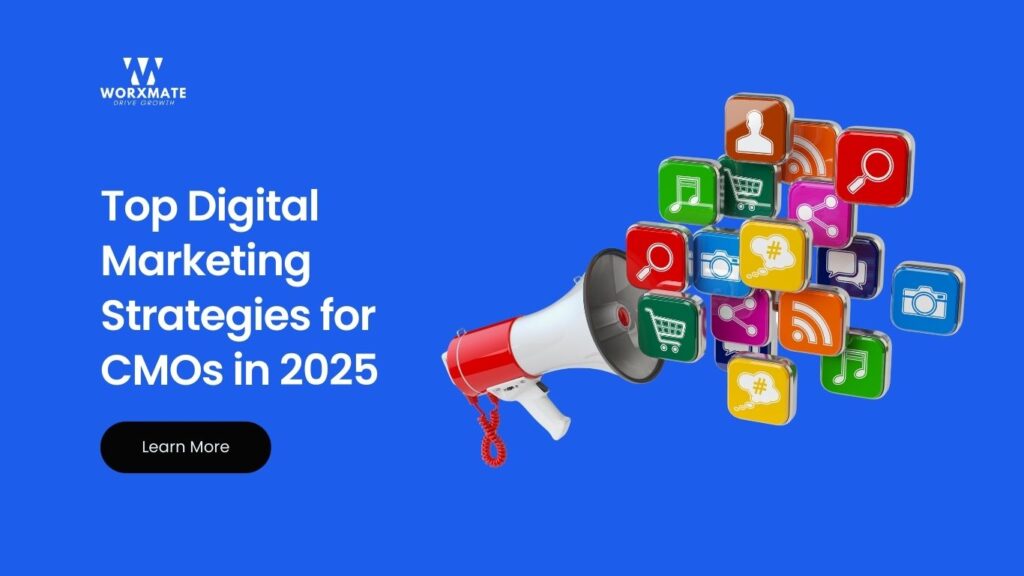64% of CMOs feel they lack the budget to execute their 2024 strategies, as digital marketing budgets have fallen to just 7.7 % of overall company revenue.
According to a 2024 Gartner CMO Survey, “CMOs are living in an ‘era of less’,” said Ewan McIntyre, VP Analyst and the Chief of Research for the Gartner Marketing Practice, making it imperative to emphasize strategy building.
In the four years preceding the pandemic, average marketing budgets accounted for 11% of overall revenue. Since then, this figure has dropped to a meager 8.2%. Despite these financial challenges, most CMOs believe AI may provide a much-needed solution.
With the rise of Generative AI and an expanding technology stack, the expectations on CMOs have skyrocketed, making it imperative to prioritize strategies, channels, and resources wisely.
By the same token, CMOs are increasingly adopting digital marketing strategies to enhance brand visibility, engage with their target audiences more effectively, and leverage data-driven insights for informed decision-making.
In a landscape where consumer behavior is rapidly evolving, digital marketing strategies enable companies to stay competitive and responsive to market changes.
In this article, we will explore the top digital marketing strategies every CMO should embrace in 2024 and 2025 and how they can align OKR into the digital marketing strategies strategies with OKR Examples.

Navigating the “Messy Middle” of Customer Journeys
In 2024, comprehending the “messy middle” of customer journeys is vital for effective marketing. This involves not just understanding keyword intent but also continuously aligning marketing strategies with customer behavior across various digital platforms.
CMOs can kickstart digital engagements by establishing clear objectives and key results (OKRs) to regularly assess and refine digital presence, ensuring visibility and relevance where the target audience engages the most. For the same, it’s essential to maintain authority and adapt proactively to the changing digital ecosystem, positioning your brand as a thought leader in the marketplace.
OKR Example for Aligning Customer Journey
Objective: Analyzing or analytical understanding customer journeys across digital platforms.
- Key Result 1: Increase customer engagement metrics (click-through rates, time on page) by 25% in Q2.
- Key Result 2: Conduct monthly user journey audits and refine marketing strategies based on findings.
- Key Result 3: Achieve a 20% improvement in brand visibility on key digital platforms by Q3.
The Rise of Interactive Content
As data privacy regulations have tightened and third-party cookies are phasing out, interactive content is becoming a cornerstone of effective marketing strategies. Quizzes, polls, and engaging formats gather psychographic data while enhancing user experience.
CMOs can set measurable goals for interactive content usage, aligning with feedback mechanisms to evaluate effectiveness. Recent surveys by Hubspot indicates that 26% of marketers plan to invest more in short-form video than any other format in 2024, the highest of any format by far.
OKR Example for Creating Interactive Content
Objective: Boosting user engagement through interactive content.
- Key Result 1: Launch 3 new interactive content formats (quizzes, polls, etc.) by the end of Q1.
- Key Result 2: Increase user participation in interactive content by 40% within six months.
- Key Result 3: Collect and analyze psychographic data from at least 5,000 users by the end of Q2.
Leveraging AI in Creative Content Development
AI is transforming creative content generation, with predictions indicating substantial growth in AI-driven marketing solutions. In order to be at par with the trends, CMOs should set objectives around the integration of AI tools, focusing on understanding their capabilities and limitations.
Content generation AI tools like ChatGPT can significantly help in enhancing brainstorming and strategy development. Regularly reviewing the impact of these tools on creative processes will help ensure alignment with overall marketing goals.
OKR Example for Leveraging AI in Creative Content Development
Objective: Integrating AI tools to enhance creative processes.
- Key Result 1: Implement AI tools for content generation by the end of Q2.
- Key Result 2: Achieve a 30% reduction in content creation time by Q3.
- Key Result 3: Conduct quarterly reviews of AI impact on creative outputs and adjust strategies accordingly.
Influencer Marketing and Long-Term Partnerships
Influencer marketing continues to grow in importance, emphasizing the value of long-term collaborations. Establishing goals that prioritize building authentic relationships with influencers who resonate with your brand values will only add cherry on the cake to the marketing strategy.
This approach transcends mere product promotion; it’s about crafting narratives that intertwine brands with the influencer’s lifestyle, creating a deeper emotional connection with their audience.
OKR Example for Influencer Marketing and Long-Term Partnerships
Objective: Building authentic relationships with key influencers.
- Key Result 1: Establish partnerships with at least 5 influencers who align with brand values by Q2.
- Key Result 2: Increase engagement rates on influencer-led campaigns by 25% within three months.
- Key Result 3: Develop and publish 3 co-branded content pieces by the end of Q3.
Conversational Marketing and AI-Driven Interactions
Conversational marketing through AI chatbots and virtual assistants is reshaping customer engagement. By setting clear objectives for implementing AI technologies; can provide immediate, personalized responses. Backing it by a feedback loop to measure customer satisfaction and conversion rates can help ensure that strategies are continuously refined based on real-time interactions.
OKR Example for Conversational Marketing and AI-Driven Interactions
Objective: Improving customer engagement through conversational marketing.
- Key Result 1: Implement AI chatbots on all major platforms by the end of Q1.
- Key Result 2: Achieve a customer satisfaction score of 85% for AI interactions by Q2.
- Key Result 3: Increase conversion rates from chatbot interactions by 15% within six months.
Sustainability and Ethical Marketing Practices
In 2024, consumers increasingly demand transparency and ethical practices from brands. By setting OKRs that align with marketing efforts and sustainability goals, such as using eco-friendly materials or promoting social responsibility initiatives; CMOs can enhance brand reputation but also resonates deeply with today’s conscientious consumers.
OKR Example for Sustainability and Ethical Marketing Practices
Objective: Aligning marketing efforts with sustainability goals.
- Key Result 1: Launch a sustainability campaign promoting eco-friendly practices by Q1.
- Key Result 2: Increase consumer awareness of sustainability initiatives by 30% through targeted marketing efforts by Q3.
- Key Result 3: Reduce carbon footprint of marketing materials by 20% by the end of the year.
Hyper-Personalization Through Data and Analytics
Hyper-personalization is reshaping marketing strategies, allowing brands to deliver customized experiences. Utilizing big data and analytics, focusing on individual consumer preferences and behaviors can improvise conversion rates through personalization.
This approach should be continuously evaluated against established metrics to ensure meeting the expectations of modern consumers.
OKR Example for Hyper-Personalization Through Data and Analytics
Objective: Delivering personalized marketing experiences through data insights.
- Key Result 1: Increase the use of customer data analytics in campaigns by 50% by Q2.
- Key Result 2: Achieve a 25% increase in conversion rates from personalized content by Q3.
- Key Result 3: Collect and analyze feedback from at least 1,000 customers on personalization efforts by the end of Q4.
Emphasizing Video Marketing and Short-Form Content
The popularity of platforms like LinkedIn Videos and YouTube Shorts highlights the necessity of short-form video content.
By setting clear goals around video marketing initiatives, using concise storytelling to engage audiences with diminishing attention spans; can give a kickstart to multimedia marketing.
Tracking engagement metrics to refine your approach can help ensure that content resonates effectively across different platforms.
OKR Example for Emphasizing Video Marketing and Short-Form Content
Objective: Enhancing brand visibility through video marketing.
- Key Result 1: Produce and publish 10 short-form videos by the end of Q2.
- Key Result 2: Increase video engagement rates (likes, shares, comments) by 30% within six months.
- Key Result 3: Track and report on viewer retention rates, aiming for at least 60% retention on all video content by Q3.
Staying Ahead of Digital Marketing Trends to Thrive in the Ever-evolving Digital Marketing Landscape, CMOs should:

- Engage with Industry Resources: Subscribe to leading publications and newsletters to stay informed about the latest trends and insights.
- Attend Networking Events: Participate in conferences to connect with industry experts and uncover emerging trends and tools.
- Learn from Thought Leaders: Actively engage with and learn from experts in the field, contributing to discussions and sharing insights.
- Analyze Data Regularly: Make it a practice to review industry reports and analytics to understand evolving consumer behaviors and technologies.
- Experiment with Emerging Tools: Foster a culture of experimentation, testing new platforms and technologies to assess their potential impact on your strategies.
- Commit to Continuous Professional Development: Given the dynamic nature of marketing, prioritize ongoing learning and skill enhancement.
By aligning these strategies with OKR goals, CMOs create a cohesive framework that drives accountability, ensures alignment across teams, and fosters continuous improvement in digital marketing efforts.
Want to convert your digital marketing strategies into achievable results through OKRs?
Discover how Worxmate’s OKR Platform can streamline your workflows, enhance collaboration, and drive measurable results.



